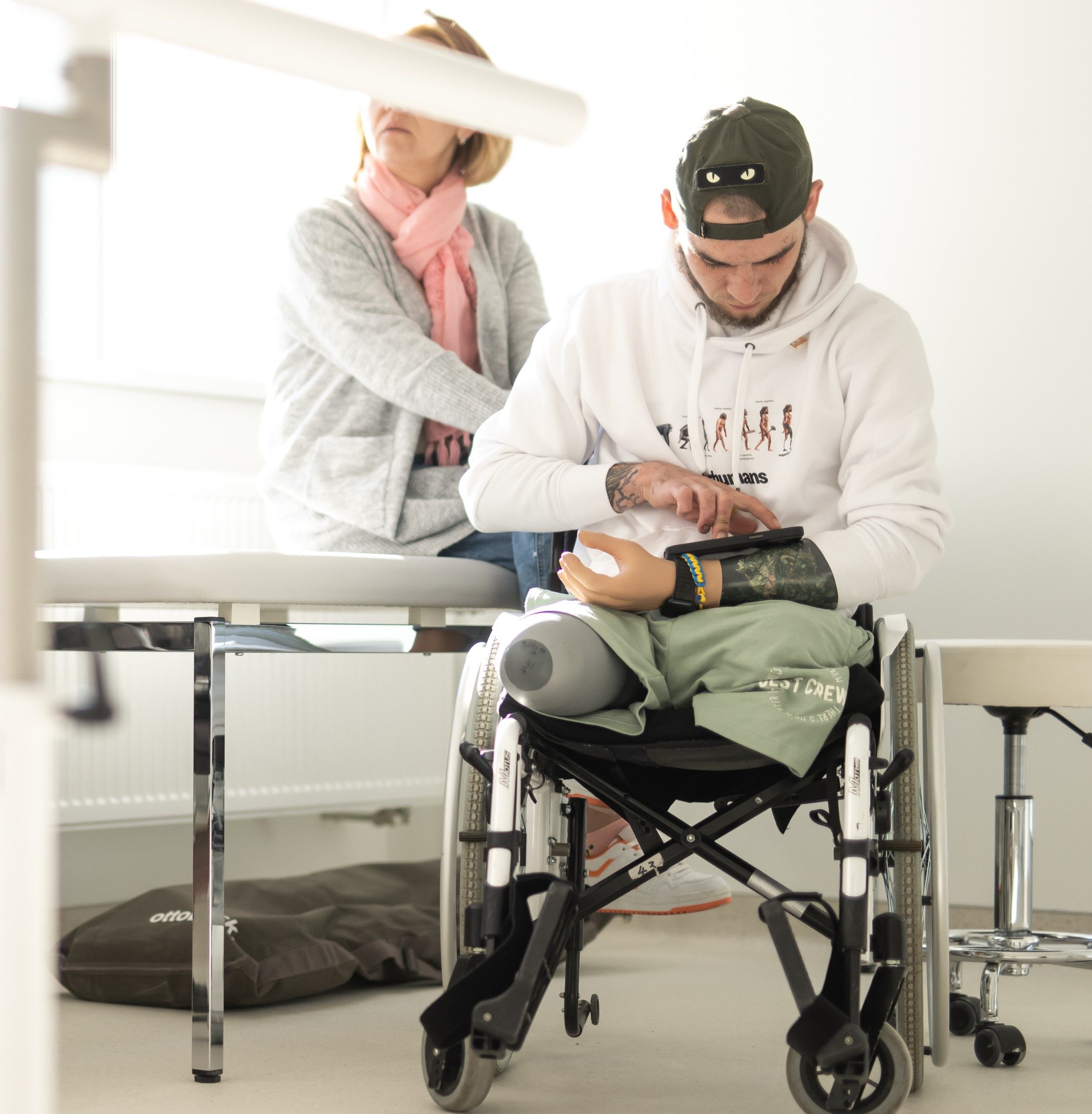Elective routes, redesigned
We spoke to Matthew Kershaw and Ned Hobbs about making a success of elective hubs in hospitals
Despite higher health spending, workforce growth,1 and much political and health service ambition for the elective recovery,2 a huge backlog remains. According to NHS England’s latest statistics, the number of patients on the elective lists at the end of June 2024 was around 6.4 million, with 7.62 million treatments outstanding. The waits were over 18 weeks for 42% of cases.3 The problem is clearly a stubborn one. So how have Trust leaders been tackling it, and what insights can they share about redesigning pathways around elective hubs?
Physical changes
For Matthew Kershaw, Chief Executive of Croydon Health Services NHS Trust, the answer has been a blunt physical one: “To continue delivering care during the peak of the pandemic, we had to create a safe space; a hospital within a hospital. In essence, it meant closing a door to the main hospital and knocking a hole in the wall to create a new entrance.” Yet that was the easy part. “We had to change the whole working practice of the theatres, and pre-assessment and postoperative care, to create a sort of self-contained elective space on a very hot district general hospital site,” says Matthew. What started with knocking a hole in the wall is now a GIRFT-accredited surgical hub known as the Croydon Elective Centre.
This takes elective patients straight into surgical care without disruption from the hospital’s more urgent activities. “It feels slightly less pressurised here,” Matthew continues, “because we’ve completely separated the emergency and planned care surgical pathways, putting one pathway through, so you’re not trying to compete all the time with the demands of a busy emergency department. That’s been the biggest difference.”
The decision to create the new entrance was an early response to the first wave of Covid-19, and creating the Croydon Elective Centre was a clinically led initiative. It was an ambitious one, since it “required all aspects of the pathway to change,” Matthew explains, “from the admin team who were booking patients, to the pre-assessment staff preparing patients, to the anaesthetic and theatre staff treating the patients, and indeed the ward staff recovering the patients. So everybody’s job changed. But in one sense, all we did was lock one door, and knock a hole for another to create this dedicated space.”
Most of the staff were supportive of the change “because it allowed them to get back operating quicker,” and to work more efficiently and effectively in a protected space. The results were quickly tangible. In wave two of the pandemic, the new Croydon Elective Centre was enabling the Trust to continue operating electively when, Matthew explains, “most other organisations were not doing so”.
The separation of elective work to isolate it from wider demands in hospitals is recognised as one of the best practices to reduce the elective backlog. Getting It Right First Time has awarded some such sites ‘surgical hub status’ in recognition of the high-quality of care while tackling waits. Croydon won this accreditation in 2023.4
Covid-19 was the initial trigger leading up to Walsall Healthcare NHS Trust getting the same recognition that year from NHS England. The Trust had a similar adjustment to the physical estate, too. “One of the big changes that we made – initially as a result of Covid-19, but have maintained ever since – is the physical separation of emergency inpatient wards from our elective inpatient wards,” says Ned Hobbs, the Trust’s Chief Operating Officer. A wing of the hospital is now entirely ringfenced for elective care. “So that means that when our surgeons, our anaesthetists and our theatre staff are turning up to work each morning, they know that they are guaranteed access to a bed. The physical reconfiguration of the site is important.”
Culture shift required
The changes on the hospital site were physical enablers for both Walsall and Croydon, but redesigning the care pathways around these – and sticking to the discipline of protecting the elective effort – needed strong leadership. There must be a culture of staff support for bringing down the elective waits, so there has been a persistent commitment at both Trusts to the ringfencing of non-urgent theatre work. Mission creep has not been allowed to open up the elective theatre doors to the competing demands of urgent care.
Towards this vision at Walsall, Ned says it has been a publicly committed practice that “we don’t transfer any patients admitted under medical specialties to surgical wards”. For Matthew at Croydon, “what we have maintained is that we don’t use this space for emergencies – we have a separate Emergency Surgical Centre (ESC) for that now, so we can continue to prioritise our patients who have been waiting for planned procedures, despite the demands for emergency care. One pathway is no longer dependent on the other. And that’s been really important to maintain, because if you lose that, then you’ve not really got an elective centre.”
For Walsall, the context is one of a medium-sized Trust bringing together district general, acute and community services for a diverse population with a high level of deprivation. This integrated Trust is in the Black Country, which has the “second-most deprived integrated care system in the whole of England,” Ned explains, “and that undoubtedly has a bearing on the need for hospital-based elective care”. Covid-19’s impact on elective work was “quite pronounced” here, he adds. So, the Trust had to cut its elective capacity significantly. Against that backdrop, the change to process and infrastructure to improve electives might have been easy to explain, but “the one that’s least easy to articulate, and least tangible – but probably the most important – is culture. We have worked hard to instil a culture at Walsall that, actually, if patients can receive better access to care somewhere else in the country, why can’t they get it in Walsall?”
Hot site hubs
Facing up to the challenge of creating this elective focus is a notable achievement under high demand at sites also meeting acute and emergency needs. The special recognition given to these elective hubs, created in line with the NHS Elective Recovery Plan,5 has typically gone to sites that are completely separate from any emergency care hospital – ‘cold’ sites that do only elective care. The physical separation for elective care at ‘hot’ sites relies on improvements in urgent and emergency care too though, Ned argues, and the “interrelation is really important. We’ve got to be able to deliver safe and timely urgent and emergency care, and manage that pathway to then enable us to protect the space for elective treatment. The two go hand in hand.”
Matthew champions the creation of elective hubs at hot sites rather than cold ones. He was keen that the Croydon Elective Centre would be on a district general hospital site. “We’ve created a hub in a place that is not only accessible, but is where people are used to receiving care – and for our local population, that is massively important.” Like Walsall, Croydon has a diverse population with significant health inequalities. “You don’t want to have to say to patients, ‘You could get your elective care, but it’s going to be 10 miles away in a different borough.’”
For a successful hospital-based elective hub, Ned adds, a formal workforce review is needed alongside the physical changes. The Trust looked at this for operating theatres, anaesthetics and elective inpatient wards. The workforce changes took 12 to 18 months to bear fruit at Walsall, but now the Trust “can consistently run more operating theatre sessions per week than we used to”, asserts Ned. Achieving this needed more resource in theatre and anaesthetic staff, but also a slight change in the skill mix of the surgical support staff. “What that’s meant,” Ned says, “is that across the five working weekdays, we’ve increased our number of elective theatre lists that would be run from 70 to 80 per week – so a fairly material increase.”
Other signs of the overall results include the level of operating theatre utilisation – Walsall is now in the upper quartile nationally for the proportion devoted to elective treatments. Part of this success comes from the introduction of a minor surgery procedure room for imaging-guided work that used to take up theatre slots.
The investment to change the physical estate, plus the vision to both resource and attract a workforce into well-supported, ringfenced elective work, is paying dividends at Walsall. “We’re treating more patients than we’re adding to the waiting list each week,” Ned says. The total elective waiting list has shrunk by 17% over the last 15 months.
One lesson Ned would urge others to learn from Walsall is that transformation to isolate elective lists needs long-term thinking. The demands on the NHS mean that the question is always: “How are we managing here and now?” Yet he would like Trusts to have longer views: “How are we building the infrastructure and the resilience for improvement in six, 12 or 18 months’ time?”
Ned concludes: “Any of those big decisions with significant lead time to implementation – actually, those are the ones you want to be taking first, so that you bring forward the benefits for patients.”
For Matthew in Croydon meanwhile, one of the secrets is to empower of clinical leaders, and ensure they are supported and enabled by managers. “The best way of getting change is clinically driven, managerially enabled,” he says. “One measure of our success at the Croydon Elective Centre here has been our ability to provide capacity to other areas of London, offering mutual aid. We’re able to do that because we’ve got a model that that works, but it’s not always easy. You have to keep going at this all the time. If you take your eyes off it, then the waiting list can expand quickly and we are keen to continue reducing the backlog wherever we can.”
According to Matthew and Ned, success against the elective priority means developing successfully ringfenced elective centres with early, clear and sustained leadership – plus some trial and error as new lessons are learnt in treating more patients.
FOOTNOTES
© Dialogue Content Marketing Ltd 2025.
This article was taken from the November 2024 edition of FORTIS magazine.
FORTIS magazine is a Health Spaces Limited publication. Opinions expressed in FORTIS magazine are not necessarily those of Health Spaces Limited or Dialogue Content Marketing Ltd. Material contained in this publication may not be reproduced, in whole or in part, without prior permission of the publishers. No responsibility can be taken on behalf of advertisements printed in the magazine.
FORTIS magazine – read more
This article was written for the November 2024 edition of FORTIS magazine; a forum for the NHS to share ideas, innovations and case studies. To read the publication in full and access digital copies, visit FORTIS magazine. FORTIS magazine is free for NHS change-makers and leaders and is available as a print or digital copy. FORTIS magazine is managed and owned by Health Spaces Ltd.




